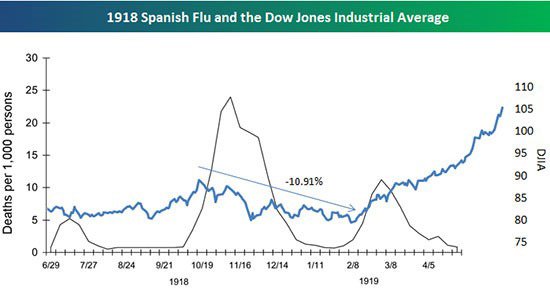Contrary to what many investors believe about current market conditions, you don't have to let everything in your portfolio go to hell in a handbasket because of the coronavirus… or any other panic-inducing sound bite.
In fact, quite the opposite is true – and I'll show you why in a minute.
But it is a good time to make sure you have the right portfolio hedge in place.
To be clear, hedging isn't about betting the farm or placing all your eggs in one basket. What you want to do is to assemble a set of positions that will help take the sting out of any market correction while maintaining the profit potential that you know leads to big gains when the dust settles.
It doesn't matter how you hedge your portfolio – just that you DO it.
Today, I'll show you the simple, easy-to-make moves that can help protect AND grow your portfolio. Even if the selling continues…
Don't Get Caught Up in the Fear
Trying to keep up with the latest coronavirus news can give you one whopper of a headache.
Do yourself a favor and take a deep breath.
Not to make light of the situation, but big news like this comes and goes a lot more than you'd think.
What's changed is the speed at which it's reported.
The Spanish flu of 1918, for example, first surfaced in the spring of that year, but it didn't strike with a vengeance until fall. What's more, the pandemic was reported in waves, not all at once.
Yet, the markets charged on. Growth slowed, but it did not stop.
Many investors are surprised to learn that the Dow Jones Industrial Average sold off slightly but rallied into the summer of 1918 just prior to the second, more virulent flu breakout.
Then – and this is the important part – it began to rally in earnest, even as the third wave of mortality peaked.

Fast-forward to today's computerized markets, and I think there's a good case to be made that we will have a repeat.
Today, though, the markets are far more likely to sell off ahead of time, in anticipation of what happens next rather than what's already happened.
But research shows that the financial markets actually spend about two-thirds of the time at or within 10% of new highs… meaning the drive to higher prices we talk about all the time is very real and can be very profitable.

So, while it's tempting to sell everything because you're scared by one headline or another or you're simply letting your emotions get the better of you, that's not something you want to do if you can avoid it.
Missing opportunity is always more expensive than trying to miss losses. The data is very clear on that.
Speaking of which…
Two Easy, Powerful Moves to Protect Your Money
Most investors tend to think about their money in terms of all or nothing… as in they're either "all in" or "all out" of the markets.
The problem with that is they give up the possibility of a rebound if they head to the sidelines. Doing so may make them feel good, but there's a very real cost associated with doing so, because people who run for the hills forgo dividends and upside.
People tell me all the time that they'll "get back in," but very few actually do. That was the case in 2009 and again last year. You wouldn't believe how many investors now tell me they regret missing out on the greatest rally in recorded history… and that they still haven't gotten back in!
The better solution is to carve off part of your capital (about 3% to 5% of total investable assets is fine for most investors, but check with your financial advisor about what's best for you) and to buy shares in a specialized "inverse" fund that appreciates when everything else heads for the basement.
My favorite is the Rydex Inverse S&P 500 Strategy Inv Fund (RYURX), an inverse fund I've recommended for years. It's unleveraged and should move 1:1 with the S&P 500. The minimum is $2,500, and there's an expense ratio of 1.540%.
If exchange-traded funds (ETFs) are more your style, consider a choice like the ProShares Short S&P 500 (SH), which accomplishes the same thing.
Ideally, you want to choose an inverse fund that matches up to your personal portfolio – meaning you could choose ProShares Short Dow 30 (NYSE:DOG) or the ProShares Short QQQ (NYSE:PSQ) if you're keen to hedge against specific stocks in the Dow Jones Industrial Index or in the tech-laden Nasdaq, for instance, rather than those in the S&P 500.
Options-savvy investors have yet another group of tools available to them, ranging from simple directional bets using puts or calls to sophisticated spreads that give you some breathing room.
